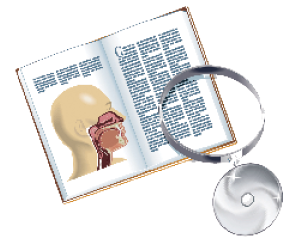 Background
Background
The diagnosis of necrotizing, or “malignant,” otitis externa (NOE) is typically made by the clinical picture of a severe otitis externa, often in a diabetic or immunocompromised patient, with associated skull base soft tissue infection and osteomyelitis, as visualized on magnetic resonance (MR) or computed tomographic (CT) scanning. While treatment efficacy has improved since the condition was first described decades ago, NOE remains a severe infection with potential for significant morbidity and mortality. Bacterial NOE is ideally treated with at least six weeks of culture-directed systemic antibiotics, often with infectious disease consultation. Patients presenting with NOE frequently have been previously treated with oral or topical antibiotics, rendering cultures negative. In these cases, many clinicians empirically treat with antipseudomonal antibiotics. Longer therapy may be required with multidrug resistant strains of bacteria such as Pseudomonas aeruginosa, or with molds such as Aspergillus fumigatus. As NOE can mimic squamous cell carcinoma of the external ear canal on physical exam and CT scan, some clinicians biopsy granulation tissue when diagnosis is uncertain or if granulation tissue is present after six weeks of treatment. Once clinical exam and laboratory markers have normalized, the otolaryngologist faces the problem of how to determine if treatment has been adequate and can be discontinued with minimal risk of recurrence. As soft tissue involvement is expected to have resolved, the concern is for persistent osteomyelitis. Two questions are important: what is the appropriate duration of antibiotics and how can the clinician tell when the infection is resolved.
Best Practice
Based on recommendations for the treatment of osteomyelitis, bacterial NOE should be treated with at least six weeks of antibiotics. Even with clinical resolution, there may be concern for residual infection in a surgically inaccessible skull base area. Imaging studies can therefore be considered. MRI, CT, and Tc99 cannot be used to document resolution as bone changes persist after disease resolution. Ga67 scintigraphy or 111In-labeled leukocyte scintigraphy combined with SPECT/CT can help differentiate healing bone from active infection. If these are positive, antimicrobial therapy is continued, and the scans can be repeated at two to four week intervals until normalization. No current evidence exists for the efficacy of FDG PET in imaging NOE, but the otolaryngologist should consider consultation with radiologists specialized in nuclear medicine as imaging modalities may change rapidly. Recurrence has been reported to be around 15% to 20%, so at least a six month follow-up for NOE with a low threshold for reimaging is ideal. Future research directed at determining the sensitivity and specificity of the various radiologicmodalities in identifying resolution of disease could help unify recommendations for when to terminate therapy for NOE. Read the full article in the Laryngoscope.
Leave a Reply